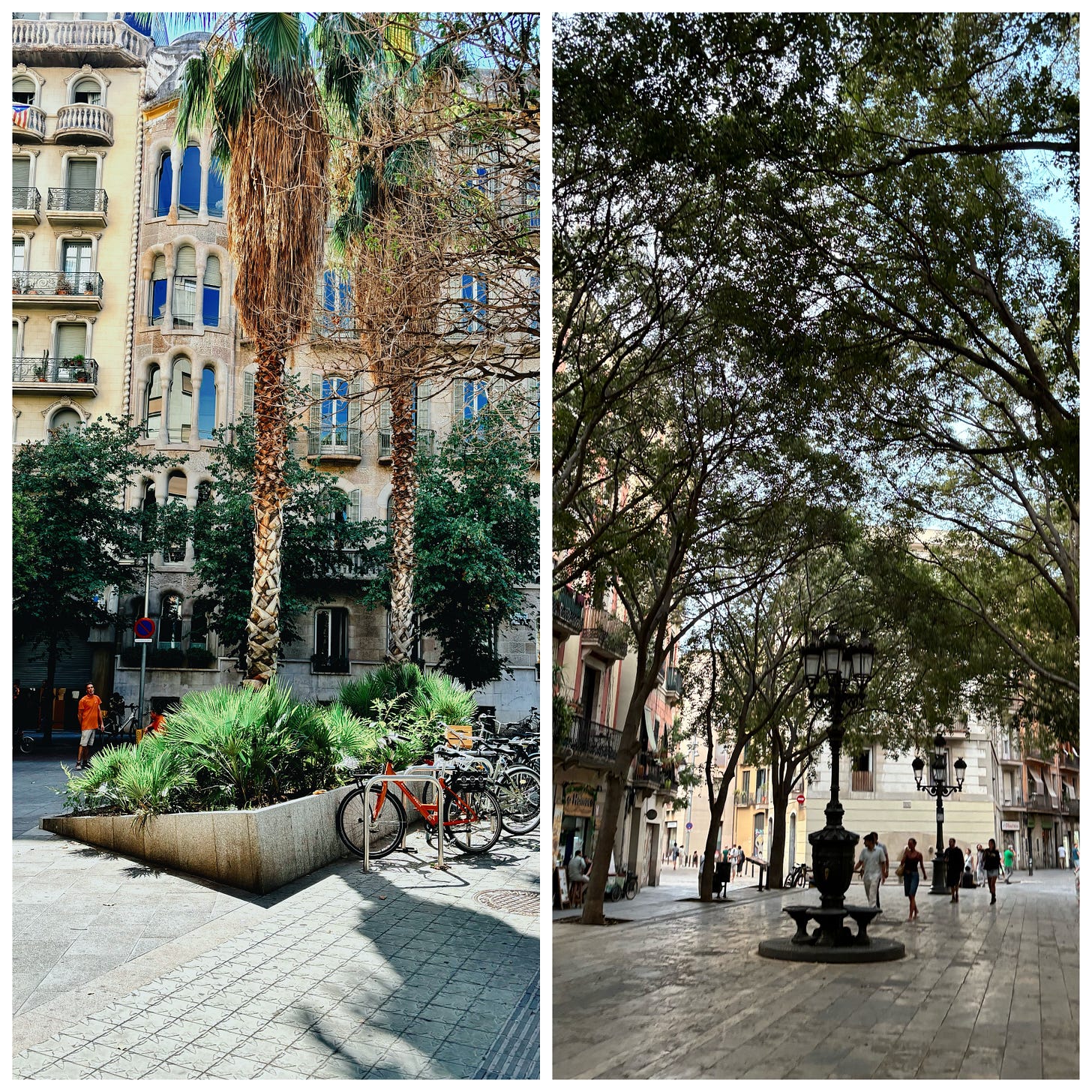Part 2: How Housing Became an Investment Strategy—and What It’s Costing Us
A Case for Housing as a Human Right

Are You My Neighbour?
One question I return to—again and again—and one our cities can’t seem to answer is this: How do we solve houselessness?
We keep building high-rises and sprawling out into new developments, so how is it that people still can’t stay housed? Many folks are even earning enough to “afford” a place—yet still can’t find one.
From those seeking shelter or sleeping rough to families looking to grow into homes with a yard, there just doesn’t seem to be enough to go around.
So I keep asking: Could our housing crisis be rooted in something deeper? In our attachment to oversized homes, suburban architecture, and the idea that property should always turn a profit?
You can’t build a system on overconsumption and individual gain and expect no one to fall through the cracks.
It’s like fast fashion: just because we don’t see the harm doesn’t mean we’re not complicit in it.
When we push people out—out of downtowns, out of affordable rentals, out of sight—we turn a human crisis into a zoning issue.
Urban Sprawl and the Promise of Suburban Utopia
I’ve collected photos of housing architecture for years—not just for aesthetics, but to understand what design says about how we live. Like many, I’ve dreamed of owning a home. But the deeper division today isn’t just who owns and who rents—it’s how we think about what a home is.
For some, it’s an investment vehicle. For others, it’s a place to belong.
Much of our financial culture—including advice from influencers and realtors—frames housing as a wealth strategy. But this narrative often ignores the true costs: maintenance, taxes, legal fees, ongoing upgrades, and the emotional toll of tying our stability to a volatile market. Strip away the hype and the truth is simple: a house is a home—not a stock (Sethi, 2024).
That said, it’s not inherently wrong to rent out a property or build long-term equity through real estate. But when we treat housing primarily as a wealth-building tool, we must also accept the social responsibility that comes with that power. That means rent caps, tenant protections, and laws that ensure housing remains accessible to those earning entry-level or minimum wages.
Otherwise, we risk turning a basic human need into a scarcity model.
At the same time, we need to challenge the stigma around renting. Renting is not a failure. In many cases, it's a wise financial decision—freeing up time, money, and flexibility for people building a life, not just a portfolio. But we don’t treat it that way. We tell renters they’re “throwing money away,” while ignoring the fact that many are simply priced out of ownership, or have chosen a path that prioritizes quality of life over mortgage debt.
Home should never be a luxury or a litmus test for success.
The Cost of Profit-Driven Design
And yet, our cities continue to be built around return on investment—not human flourishing. Entire neighbourhoods are designed for a narrow income bracket. That’s not just bad economics—it’s bad culture.

As I wrote in Part One: this isn’t random. Sprawl and disconnection are products of deliberate policy—zoning laws that prohibit gentle density, developer incentives that favour short-term profit, transit systems built for cars, not people. The result? Oversized homes no one can maintain, communities no one can walk, and neighbours no one knows.
Sprawl becomes the default—and so we build highways to move cars in and out of the city faster (Lawler, 2024). But sprawl has a cost: rising infrastructure expenses, overburdened public services, entrenched car dependency, and housing that’s increasingly out of reach (Santos et al., 2024; González, 2023).
The dream of the suburban ideal gives way to the reality of environmental harm, social isolation, economic segregation, and deepening housing crises.
My Personal Grief Around Sprawl
On a micro scale, sprawl has distanced me from the people I love.
Some of my closest friendships have changed. Visits are rare. A once-regular hike becomes an annual reunion. Their children grow and change between each visit—talking, walking, starting school.
And there’s grief in that. I miss them.
But they’ve missed something, too—perhaps without realizing it. Community from someone without children, who lives nearby.
The friends who stayed closer—within a short bike ride or drive—those friendships still hold the rhythm of my daily life. I bathe their babies. I know each child’s quirks, energy, and phases. I see their family grow in real time, and they witness mine.
That’s the kind of community sprawl slowly erodes—not just in relationships, but in our shared civic life. When we normalize distance, we normalize disconnection.
The Bigger Picture
And at the macro level, we see the impact everywhere:
Over six-month waitlists for affordable housing
Political resistance to multi-unit zoning from our communities or satiating a culture of big-homes we are continuing to sprawl for
A lack of creative, lasting architectural solutions beyond soulless, short-term high-rises
Public unfamiliarity with gentle density, and the vibrant community it can foster
If we want to solve houselessness, we must talk about land use and renter supports.
If we want belonging, we must design for connection.
If we want equity, we must stop blocking affordable housing under the guise of aesthetics or “neighbourhood character.”
If we want a city that will thrive—we must create a culture built for long term thinking over quick profits.
We all have a place—both in the small and the big ways—in how this shifts. Maybe it’s choosing to live a little closer in and reduce sprawl. Maybe it’s staying connected, even as distance creeps in—or actually borrowing that cup of sugar from a neighbour. Maybe it’s voting in a way that honours our shared community, not just our individual needs. Or maybe it’s checking our values—not just against what we can afford, but what we expect others to afford, too.
Either way, the power to shape better cities lives with us.
A Note on Language
Many in the sector use the term houselessness to acknowledge that someone may lack stable housing, but still carry a sense of home or belonging. I’ve chosen to use this term here in respect for that nuance.
Works Cited
Communities First. (2025, June 22). Communities First Housing Policy Response. Link.
González, M. (2023). Economic Segregation and the New Geography of Poverty. Urban Studies Review.
Kern, Leslie. Gentrification is Inevitable and Other Lies. Verso Books, 2022.
Lawler, J. (2024). Sprawl by Design: Alberta’s Highway to Nowhere. Canadian Urbanism Journal.
Santos, C. J., Silva, J. P., Astell-Burt, T., Barros, H., Torres, E., & Ribeiro, A. I. (2024). The influence of gentrification on the health and well-being of older adults. Cities & Health, 8(3), 360–373.
Sethi, Ramit. (2024, May 16). Should I Buy a House: 5 Guidelines and Perfect Timing Tips. Link.
Next up: Part 3 – Intentional Cities — how architecture and urban form influence how we feel, connect, and thrive.



